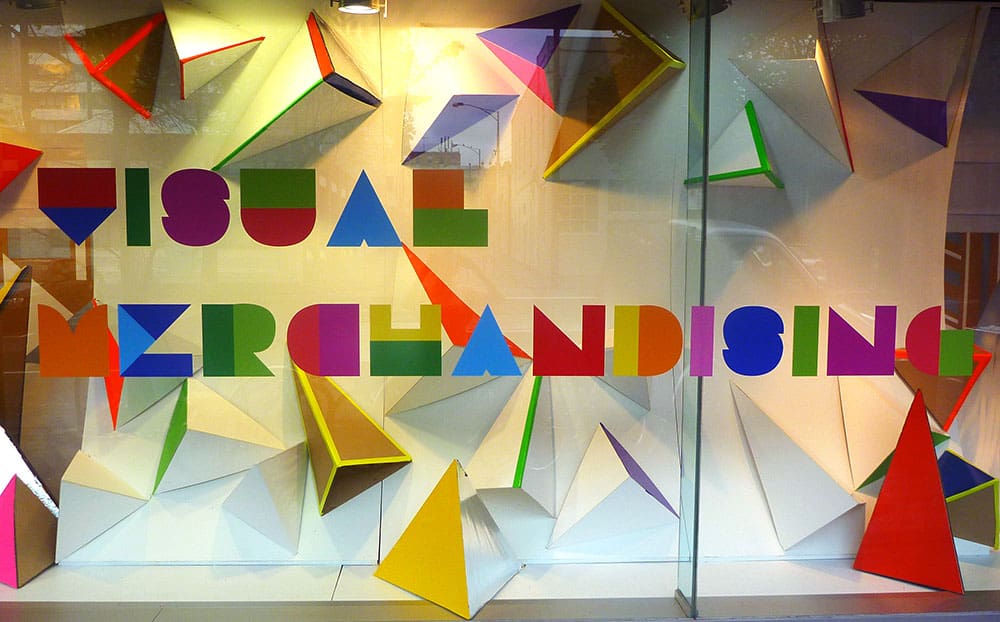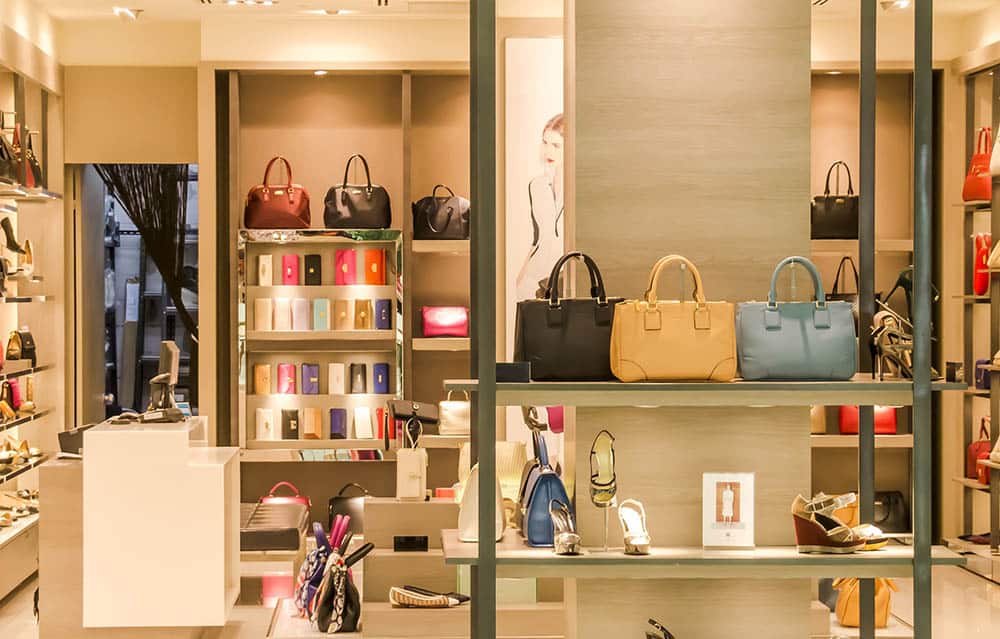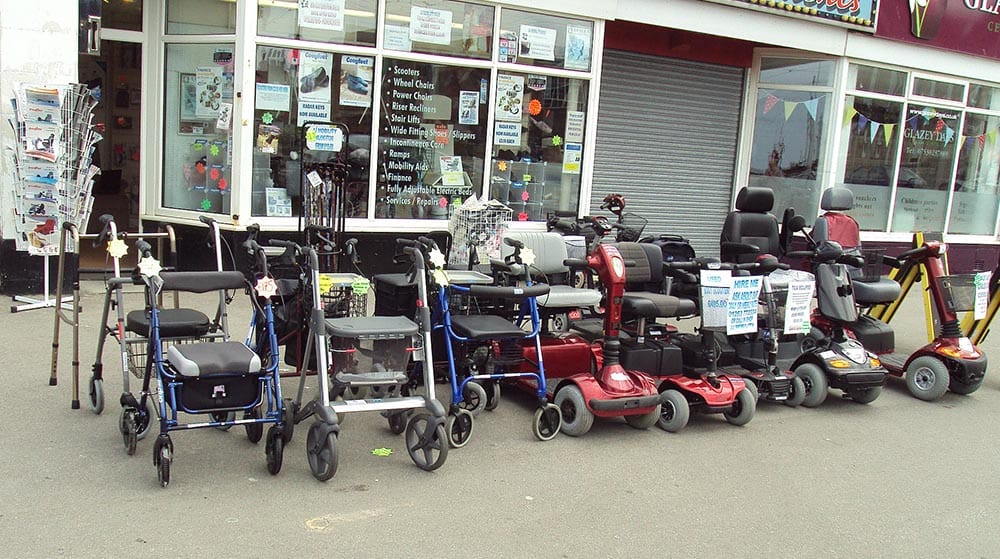Retail guidance: Increasing your sales with visual merchandising

Print expert and visual marketing guru Gary Peeling, managing director of Where the Trade Buys, provides some useful and insightful tips for retailers keen to learn more about using visual merchandising techniques to increase sales. From the use of colour to the importance of signage, Gary’s advice looks to help provide retailers with a guide to modernising the retail experience for consumers.
Some major retail chains have shown signs of floundering in the current difficult time — even the likes of Marks & Spencer are struggling.
But with the right approach, retail chains can weather the storm. One such approach that can help boost sales and bring in customers is all about visual merchandising. Visuals are key to catching the eye of a potential customer and coaxing them to enter the store!
In order to help you successfully create a visual merchandising strategy, we have put together this guide on the subject.
The importance of visuals
Firstly, it’s important to understand what visual merchandising is. The process of visual merchandising involves strategically designing the layout of an entire shop floor — including shelves and product displays — to provide a more engaging, exciting and ultimately profitable consumer experience. But there’s more to visual merchandising than just putting products in a certain place because they look nice. There’s a science behind why certain presentations, structures and even colours deliver a better experience than alternative arrangements, and it’s been established that a strong visual display can raise turnover and strengthen your brand; even inspiring customer loyalty in the process.
Bob Phibbs, chief executive officer at The Retail Doctor retail consultancy firm in New York, advises that: “Visual merchandising is everything a shopper sees at your store that hopefully leads to a remarkable shopping experience. It is the unspoken language retailers use to communicate with their customers.”
So, how do you use visual merchandising to avoid the same woe as those suffered by Maplin and Toys R Us?
The difference of want and need
Global retail sales are expected to hit USD 27.73 trillion by 202. So there’s clearly scope for your brand to maximise its profits and get a share of this growth in the next few years. The first step to achieving effective visual merchandising is what products you will use to attract consumers. A tip here is to go for what you think your customer wants — not needs. According to a study by Raj Raghunathan and Szu-Chi Huang, emotional responses are influential in our purchasing choices — which is why you should focus on giving the customer something to desire.
Your focal visual merchandising displays should have your high end, luxury items to entice customers looking to treat themselves. You could also use banners alongside these displays to present promotional offers for luxury items that you want the consumer to take notice of — and buy!
Grouping
How you group your products also impacts the effectiveness of your visual merchandising. A recent report found that exposing your shopper to the maximum number of products is a tactical method when carrying out visual merchandising. However, don’t make your displays look crowded. Utilise different display furniture, such as mannequins, racks and shelves — whichever suits the product you’re merchandising — and bear in mind that focal points boost sales by a reported 229%, so ensure that you effectively direct your consumers when they enter your store.
Consider the ‘Pyramid Principle’ and the ‘Rule of Three’ as well. The Pyramid Principle dictates that you create a triangular display, with the biggest item in the middle and the smallest on the outside — which ensures that your display doesn’t look flat and boring. Instead, it will catch the eye, as the products seem to ‘fall’ down towards the viewer. Equally effective is the Rule of Three. Within this, you create attractive asymmetry that shoppers will find engaging. Apparently, humans see asymmetry as normal — which means they pay less attention. By placing product in groups of three, you can create a noticeable imbalance that forces the eye to take in each product individually, as opposed to the display in its entirety — excellent for effectively advertising each item.
The use of colours in visual merchandising
Stylist and retail merchandiser Jessica Clarke, says: “Things that are easy to look at will be passed over, and things that are too outlandish will be offensive to the eye.”

And this goes for colour. Contrasting colours at the opposite side of the colour wheel can help grab attention — think black and white or scarlet and jade — but creating a multi-coloured display of uncoordinated colours may turn people away.
The ’decompression’ zone
Do you know how to create a decompression zone? This area of a shop is found just a few feet inside the main entrance and is believed by psychologists to elevate a shopper’s mood, acclimatise them to the store’s surroundings and get them ready for the shopping experience.
Experience is everything in the decompression zone. An effective decompression zone will help transport your consumer from the hustle and bustle of outside to a calmer, more focused environment that encourages browsing. Here are decompression zone tips:
- Minimum of 10-15 feet
- Based at shop entry with a full view of the store
- Created using contrasting furnishings and colours from the outside area to signal new atmosphere.
- Use mannequins, attractive stands and specialised lighting to highlight your newest ranges.
98% of people turn right after entering a store. Why not use your decompression zone to create a ‘circulation route’ from the right side that leads around your store for a smoother customer journey? Or, try placing your best products at the right of your decompression zone, if this is the most likely route consumers take.
Consider all five senses
We might be focusing on visuals, but there’s no reason you can’t tie in the other sense. Reportedly, 75% of emotions come from smell and our mood is meant to enhance 40% when we detect pleasant aromas. If you run a fragrance, soap or food retail establishment, are you harnessing the power of smell when it comes to merchandising?
A smell can trigger a certain memory or feeling. If you run a bakery and want to evoke a feeling of warmth, cosiness and home-cooking; ensure that your customers can distinctly smell your products baking from the kitchen by setting up the area to waft aromas into the main shop. Similarly, if your brand specialises in soaps and toiletries, place these strategically around your shop floor to avoid clashing aromas. For example, put all the citrus products together to evoke a sense of energy and rejuvenation and keep these far away from lavender and camomile scents, which are more relaxing.
Keep it fresh
Even a good visual merchandising display can’t be left up forever. A major part of tactical visual merchandising is moving your presentations as new stock comes in. Don’t let customers get bored of visiting you — keep changing things up and you can make it look like you’re constantly replenishing your stock and bringing in new and wonderful items (even if you’re not). Similarly, promotions and seasonal goods only last so long — don’t give people the impression that your brand is behind the times or lazy. Change your visual merchandising displays every month and retain the perception of innovation.
Shopping is forecast to change towards more towards an experience. With visual merchandising, you can ensure that your shop offers something engaging to keep consumers interested — so why not start planning out your shop’s next visual merchandising campaign today?
Author bio:
Gary Peeling is the managing director at leading UK print company, Where The Trade Buys, offering a speedy printing service for large and small businesses. The company provides has a range of printed products, such as the roller and outdoor banners and much more
https://thiis.co.uk/guest-blog-increasing-your-sales-with-visual-merchandising/https://thiis.co.uk/wp-content/uploads/2019/01/visual-merchandising.jpghttps://thiis.co.uk/wp-content/uploads/2019/01/visual-merchandising-150x150.jpgKnowledge HubRetail Guidancecolour,expert advice,Gary Peeling,grouping,guest blog,Maplin,Merchandising,retail chains,Retailer,The Retail Doctor,Toys'r'us,visual,visual merchandising,Where the Trade BuysPrint expert and visual marketing guru Gary Peeling, managing director of Where the Trade Buys, provides some useful and insightful tips for retailers keen to learn more about using visual merchandising techniques to increase sales. From the use of colour to the importance of signage, Gary's advice looks to help...Calvin BarnettCalvin Barnettcalvin.barnett@bhta.comAuthorTHIIS Magazine




